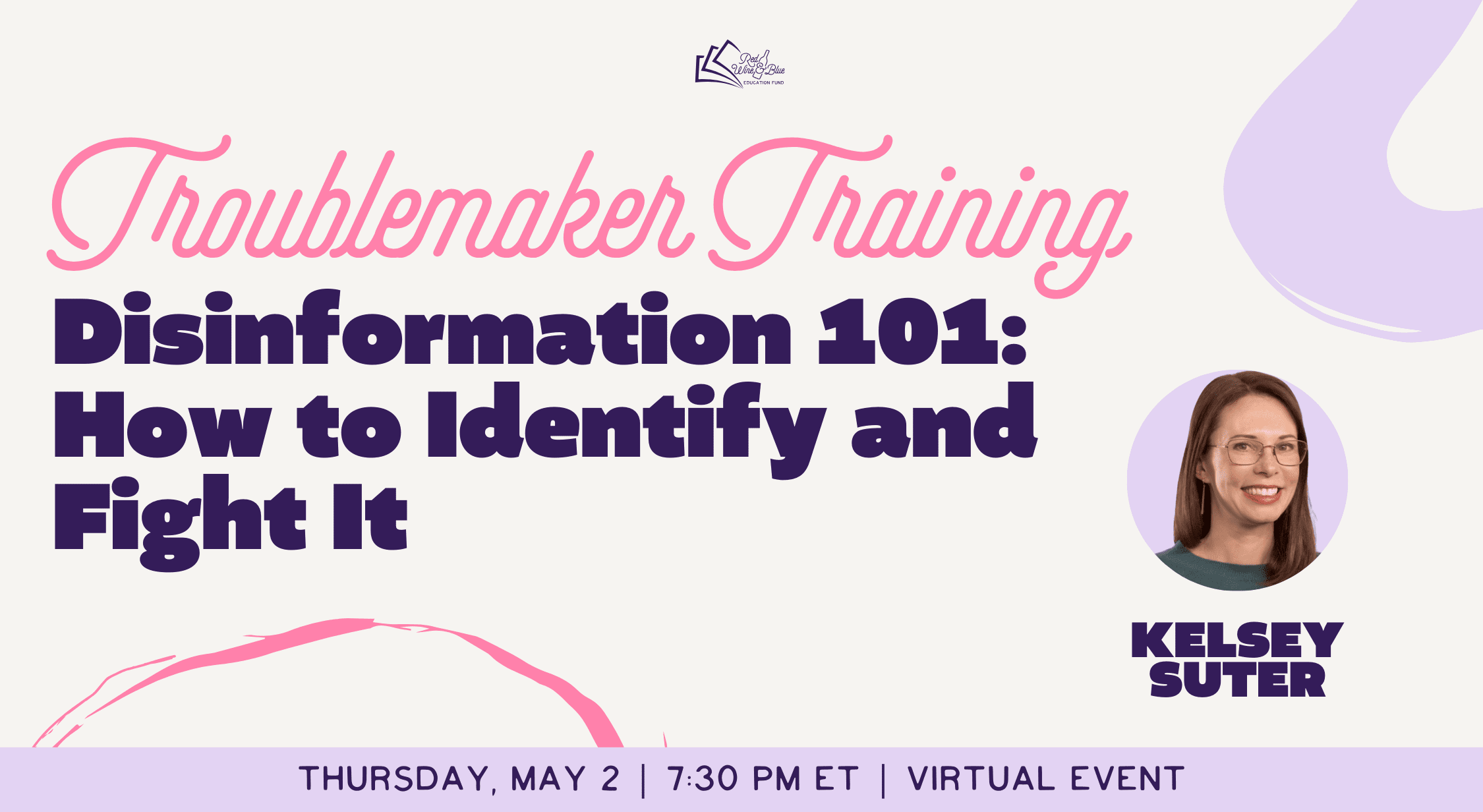
Hi there! Welcome to Easy A–Your go-to source for quick and easy actions you can take in five minutes or less about the issues you care about.
Are you a busy mom? Or maybe your work is so hectic you can’t think about anything else during the day? A lot of us are also taking care of parents or other loved ones too, leaving little time for anything else.
The good news is that these are things you can do while you’re waiting in the school pick up line, on your lunch break, or even at your kid’s soccer practice – anywhere you happen to be! And you can easily share Easy A with your friends so they can be in the know, too! We’ll send you a new action to take every week–just one, we promise –and it will always be something you can do in five minutes or less. Ready to get started? Let’s go!
Watch This: Why We’re Going Local in 2025
It’s easy to get overwhelmed by the chaotic, 24-hour national news cycle and our emotionally charged social media feeds. Everything can feel so big; so distant; so daunting. So isn’t it comforting to know that the best way out of the chaos is to keep our focus close to home?
Last week we gave you five reasons why we “go local.” This week, take one minute to listen to our favorite historian, Heather Cox Richardson, as she explains why focusing on the 52,000+ local races on our ballots this November is the best way to change the direction of our country right now.
Heather shared this wisdom and historical context with us during our recent event, Our Best Chance to Save Democracy. We don’t have to wait until 2028, or even 2026. We can make a difference this year in local elections. Starting in our own communities, we can begin to regain control over the chaos. Next week, we’ll take another easy action together to get started.
Do This: The Arizona Freedom Trust
We’re taking a break from our regular Easy A schedule this week to share some exciting news!
Have you heard about the 1864 abortion ban that is going into effect in Arizona? Back in April, the state’s Supreme Court ruled that this law — which has been on the books since before Arizona officially became a state — is enforceable. It bans abortion from the moment of conception and makes it a felony to perform abortions or aid women in getting them.
Thankfully, Governor Katie Hobbs and the Arizona legislature passed and signed a bill that will repeal this archaic ban, but unfortunately the ban will be in place for at least 3 months.
In addition to the total ban, Arizona has more than 40 laws in place restricting abortion, from a 15-week current ban, to severe limits on medication abortion, to draconian clinic requirements.
Because of this, Arizona patients were already overwhelming California’s clinics, and this is expected to ramp up with the ban in place. Unfortunately, California’s clinics are overtaxed, with only 40% of counties containing a clinic and more than 5,000 women coming from out of state annually. Patients are on waiting lists and traveling long distances to find an appointment.
To help address this crisis, the California legislature has introduced emergency legislation to allow licensed Arizona doctors to practice in the state on Arizona patients. The law will go a long way toward alleviating that stress, allowing more doctors to work out of clinics and giving Arizona providers a sanctuary in which to safely treat their patients.
And the Red Wine & Blue community has shown up in a HUGE way, already raising more than $111,000 for these women! The estimated need, however, is much more – California and Arizona are expecting hundreds of patients in the upcoming months — which is why we hope you’ll join us in donating today and spreading the word about the Arizona Freedom Trust.
This is a huge opportunity for women across the country to extend our hearts and hands to the people of Arizona. When we come together to care for and support each other, we are unstoppable. Can we count on you to help today?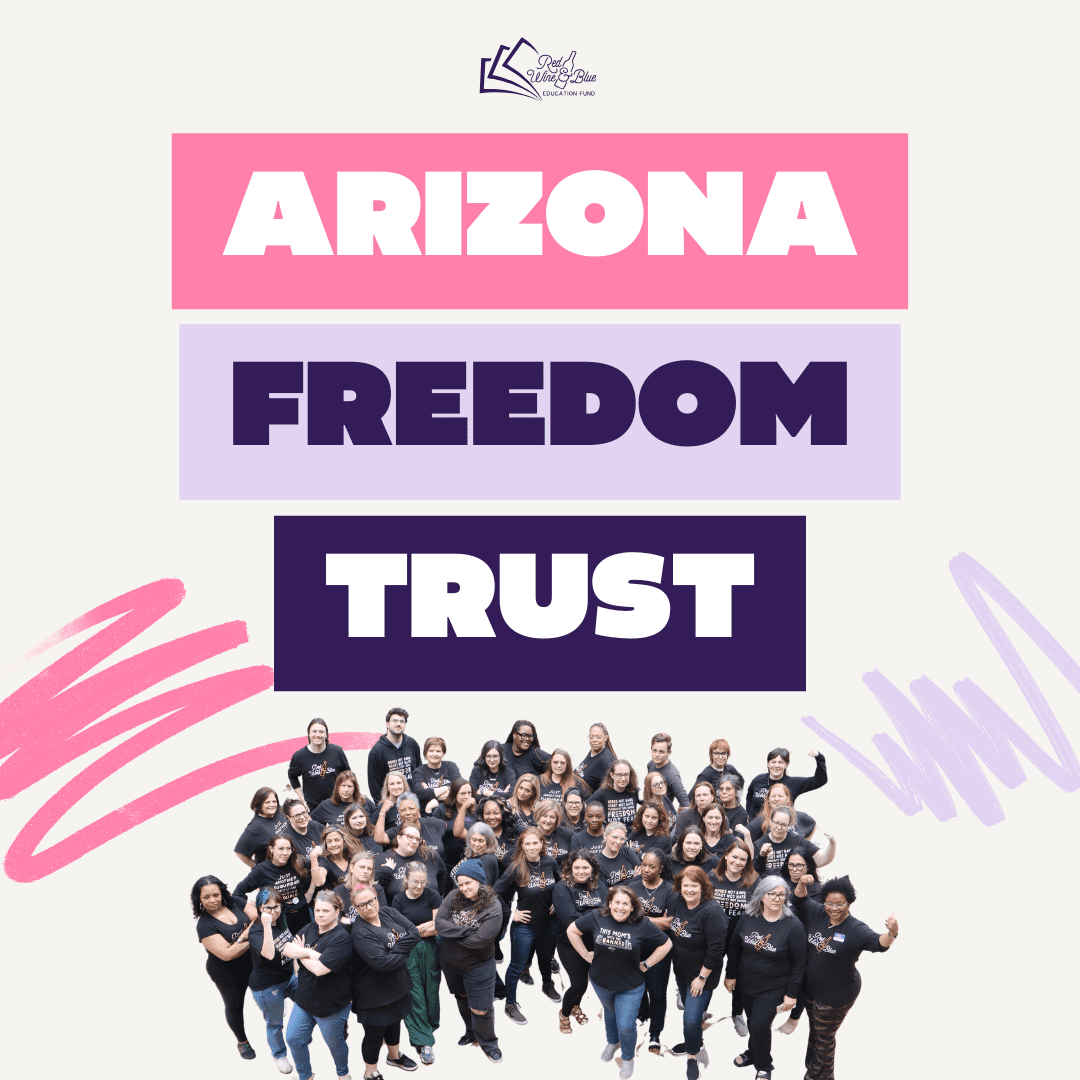
Do This: The Crunchy Mom to Alt-Right Pipeline
Over the past two weeks, we’ve learned how women can be drawn into the alt-right movement after joining seemingly harmless online communities that promote “healthy,” “clean,” or “traditional” lifestyles. We even watched a few women, Dominique and Samantha, describe how they experienced this radicalization themselves.
Both women now speak out about the dangers of these movements and how women can avoid going down this path, and Samantha works for a nonprofit that helps people leave extremist movements and rebuild their lives. One thing both women — and other experts we’ve spoken with — have all shared is how big a role disinformation plays in the recruitment and radicalization of women in extremist movements.
That’s why it’s so important for all of us to be able to spot disinformation and stop its spread. And it just so happens that tonight, Red Wine & Blue is hosting an event to teach you how to do just that!
So here’s your Easy A action for this week: register for tonight’s virtual Troublemaker Training, Disinformation 101: How to Identify and Fight It!
Even if you aren’t able to make it to the live event, if you register, we’ll send you the recording so you can watch it whenever you do have the time! And since fighting extremism is even better with friends, if you have an extra minute, share this information with people you know. Together, we can inform people and help keep them away from the dangers of disinformation and the alt-right.
Watch This: The Crunchy Mom to Alt-Right Pipeline
Last week you read about Dominique and how her evangelical upbringing led her to a “trad wife” lifestyle, and then eventually to the extremism of QAnon. This gradual process isn’t uncommon, but it’s only one of many ways women get drawn into the alt-right movement.
Some women find their way to the alt-right through the trad wife movement like Dominique, but others are drawn to it from their interest in health and wellness, or living a more “natural” lifestyle. Some have even been drawn to the alt-right after trying to debunk conspiracy theories or just trying to learn more about it – initially wanting to oppose it! Hear from some of these women in this one minute video:
No matter how women get into the movement, they are an integral part of the alt-right. The presence of women helps attract men — and other women — to the movement, giving it a safe, family-friendly feel.
To learn more about the role of women in the alt-right movement and the paths that lead them to extremism, check out The Cost of Extremism podcast episode, The Crunchy Mom to Alt-Right Pipeline, available here or anywhere you get your podcasts. And next week, we’ll talk about what we can all do to keep women from heading down this dangerous path.
Read This: The Crunchy Mom to Alt-Right Pipeline
If you’re on social media, chances are you’ve seen the “trad wife” movement. Just picture a white woman speaking sweetly while baking sourdough bread about the need for us to focus on being wives and mothers. The trad wife lifestyle advocates for a return to “traditional” gender norms, with a woman focused on children and the home while her husband works.
Many trad wives hold conservative religious and political views, but this is not a requirement. Some “crunchy” moms — those who value healthy lifestyles and “clean living” — may lean left politically but share similar interests with trad wives, like homesteading or baking. And if we think of the political spectrum as a horseshoe, not a line, it makes sense that the far-left and the far-right might be closer than we think.
The trad wife movement, though clearly not for everyone, might seem innocent enough. But lately, it’s been gaining more national attention due to its connection to alt-right politics and conspiracy theories. For some women, regardless of politics, joining the trad wife movement is the first step in the direction toward white supremacy and Christian nationalism – and they might not even be aware.
Just consider the story of Dominique, who was raised in an evangelical church and started doing door-to-door ministry when she was eleven years old. After marrying young, Dominique wanted to be a trad wife, even encouraging her husband to be more dominant in their marriage. After her first pregnancy, she quit her job and turned her focus to keeping a nice house and following the “mommy blogger” craze. Alone with her baby all day, Dominique turned more frequently to the communities she found online.
Eventually Dominique’s trad wife online communities led her to QAnon, an extremist conspiracy theory political movement. She says from her upbringing as an evangelical to her time as a trad wife, so much of her life was rooted in fear. The far-right white supremacy movement exploits this fear and reaches out to women who are vulnerable to find new recruits. They seek out women who are living in fear and promise them security by giving them a community to belong to.
Meanwhile, the presence of submissive, “traditional” looking women focused on raising a family gives the movement a softness. By centering women, the alt-right makes it seem safe for other women to join the community. The women also work as bait to attract more white men to the movement.
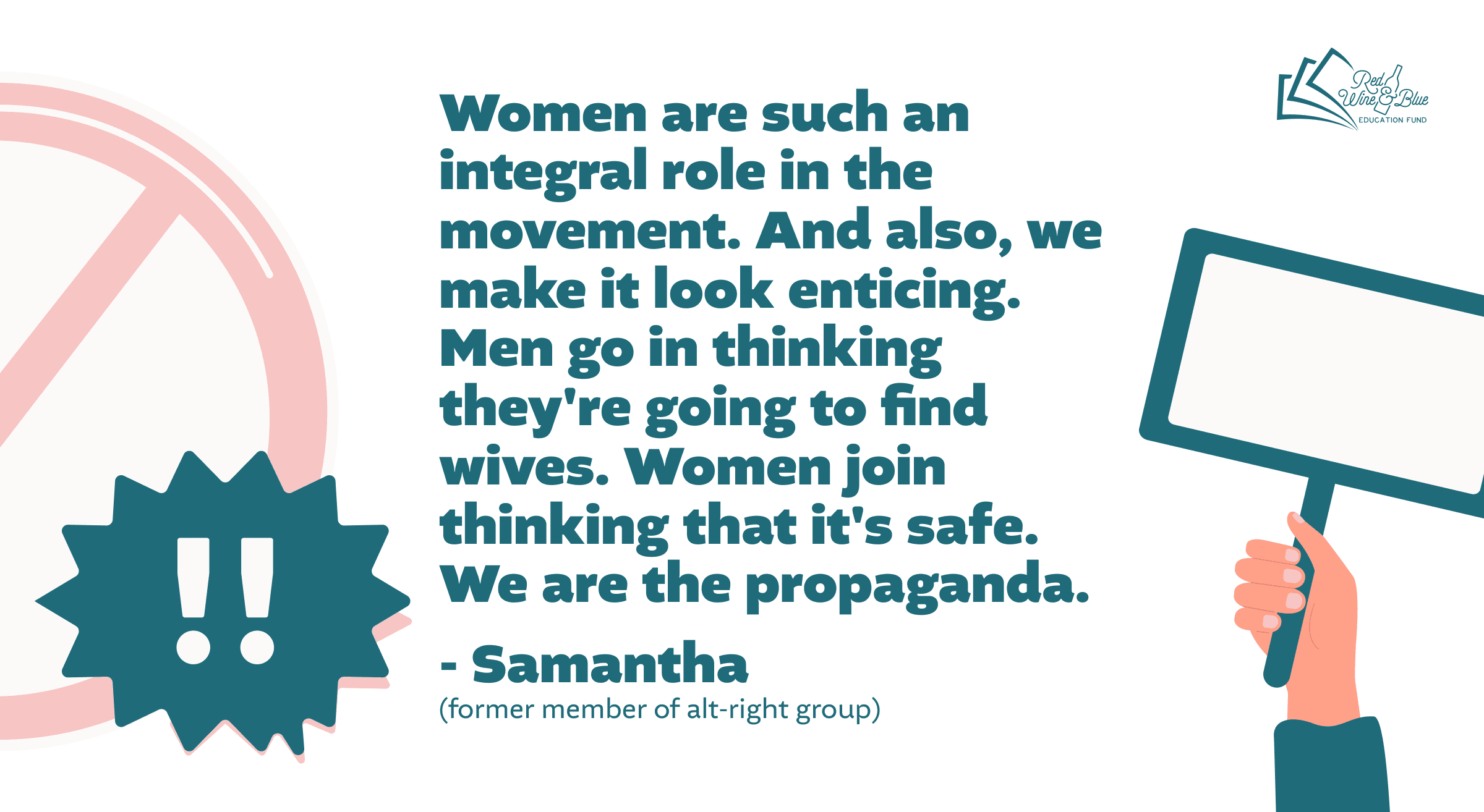
Once someone joins the community, they start hearing “everything you’ve been told is a lie.” This is a vital part of the alt-right’s messaging. If they can get someone to start questioning one thing, they can build on that fear and make them start questioning everything. Studies show that people who believe one conspiracy theory are more likely to believe another one. And that’s how someone gets hooked. Even someone who started by innocently looking online for ways to live a cleaner, healthier life, regardless of politics.
In the coming weeks we’ll talk more about what we can do to protect our friends and family against these online communities that serve as gateways to the alt-right, and offer ways to get involved in pro-democracy, anti-extremist communities instead!
Do This: The Truth About Crisis Pregnancy Centers
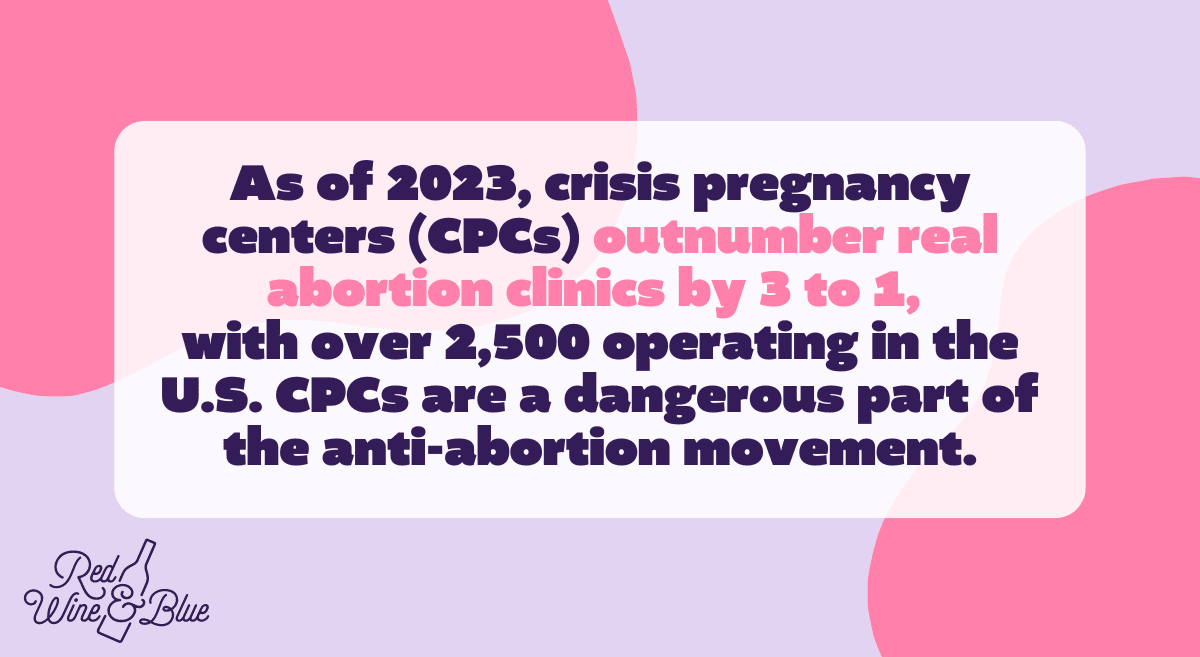
Now we know that Crisis Pregnancy Centers are everywhere, and unfortunately they outnumber real abortion clinics by 3 to 1. And what’s really dangerous about CPCs is how they use misinformation to intentionally mislead women who need real medical care. So what can you do?
Let’s share this information with everyone we know! So many people haven’t heard about CPCs, so be a part of our movement and share this message with your friends and family. It’s super-easy with our social share tool. With just a few clicks, you can share this information and earn your Easy A today!
Watch This: The Truth About Crisis Pregnancy Centers
As you read last week, crisis pregnancy centers use misinformation and fear to manipulate pregnant women and stop them from getting abortions. This misinformation is dangerous and can risk women’s health.
Listen to the story of Maleeha Aziz, who was misled by a crisis pregnancy center when she was unexpectedly pregnant while in college. Maleeha had recently moved to the U.S. from overseas and didn’t know anything about crisis pregnancy centers. Like so many women, Maleeha thought she was visiting a real healthcare facility. Instead she found herself being told lies about the risks of abortion.
After her experience, Maleeha has dedicated her career to helping other women get access to reproductive healthcare. She is now the Deputy Director of the Texas Equal Access Fund, where she speaks out against crisis pregnancy centers and other attempts to limit the reproductive rights of women in Texas.
You can hear our full interview with Maleeha at The Cost of Extremism website or anywhere you get your podcasts. And stay tuned next week for an easy action you can take to make sure more people know about the misleading tactics of crisis pregnancy centers.
Read This: The Truth About Crisis Pregnancy Centers
Have you seen a billboard reading something like, “Pregnant? We can help.” You might envision a supportive place for women to get safe and professional reproductive healthcare. But that’s not the reality.
Despite their outward appearance as qualified health clinics, most crisis pregnancy centers (CPCs), also known as “pregnancy counseling centers,” are often staffed by people with no medical credentials. They also have deep ties to religious groups who oppose abortion. You may be surprised to learn then, that the crisis pregnancy center industry operates on a national scale, receiving millions of taxpayer dollars annually while serving as a key player in the anti-abortion movement.
So how do women seeking abortion care wind up in a crisis pregnancy center? Unfortunately, CPCs rely on deceptive marketing. They aim to attract women who are seeking abortions by pretending to offer real healthcare options. They place ads near schools, colleges, and in online spaces to target women who are searching for abortion clinics. When women search for abortion clinics online, these centers’ ads often appear at the top. A report from the Center for Countering Digital Hate found that over a two year period, anti-abortion groups spent an estimated $10.2 million on Google search ads. Those ads were clicked on an estimated 13 million times, often by women looking for real reproductive care.
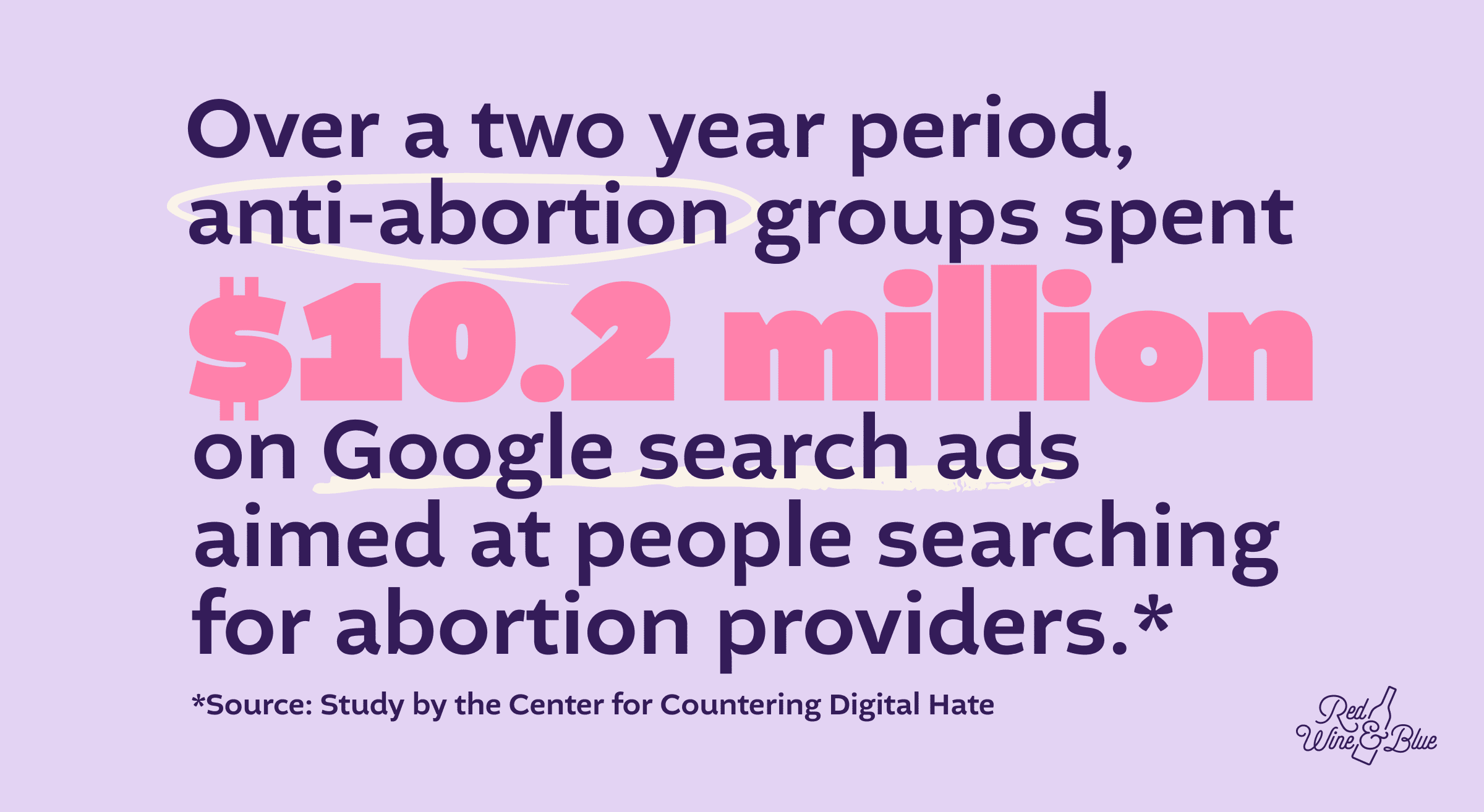
Once vulnerable pregnant patients are inside, CPCs often use religion to influence their decisions. They display religious visuals and symbols — things you wouldn’t normally see in a medical setting. They often have strict anti-contraception policies. They equate birth control to abortion and promote an abstinence-only lifestyle.
Staff at many CPCs dress in medical attire like white coats and scrubs, even if they aren’t certified medical professionals. They perform non-diagnostic tests. They also use disinformation, manipulation, and scare tactics to dissuade women from seeking abortions. They use fake medical terms, imply false connections between abortion and other health risks, cite non-existent studies, and repeat claims that have consistently been debunked by reputable institutions. A Planned Parenthood investigation found that 80% of CPC websites have false or misleading information.
As you can see, CPCs manipulate pregnant women through every step of their search for abortion care, from misrepresenting who they are and what options they provide, to using fear and guilt to stop women from getting abortions, and even misleading women about the gestational age of their pregnancy. These tactics delay or prevent women from accessing timely abortions and potentially jeopardize their health.
To make matters worse, as of 2023, CPCs outnumber real abortion clinics by 3 to 1, with over 2,500 operating in the U.S. CPCs are a dangerous part of the anti-abortion movement and not enough people know about them, but we’re going to change that! Stay tuned next week to hear directly from a woman about her CPC experience.
Do This: They Are Coming for IVF and Birth Control
As you’ve seen over the past two weeks, extremists are targeting IVF and birth control – and it’s happening all over the country. It doesn’t matter where you live, our reproductive rights are at risk at the state and federal levels.
By now you’re probably wondering, how can we stop this attack on reproductive care? That’s why we’ve launched a new campaign called, They’re Coming for IVF and Birth Control…We’re Coming for their Jobs, and we want you to join us!
Join our campaign to say “hell no” to extremists who want to take away our rights to IVF and birth control.
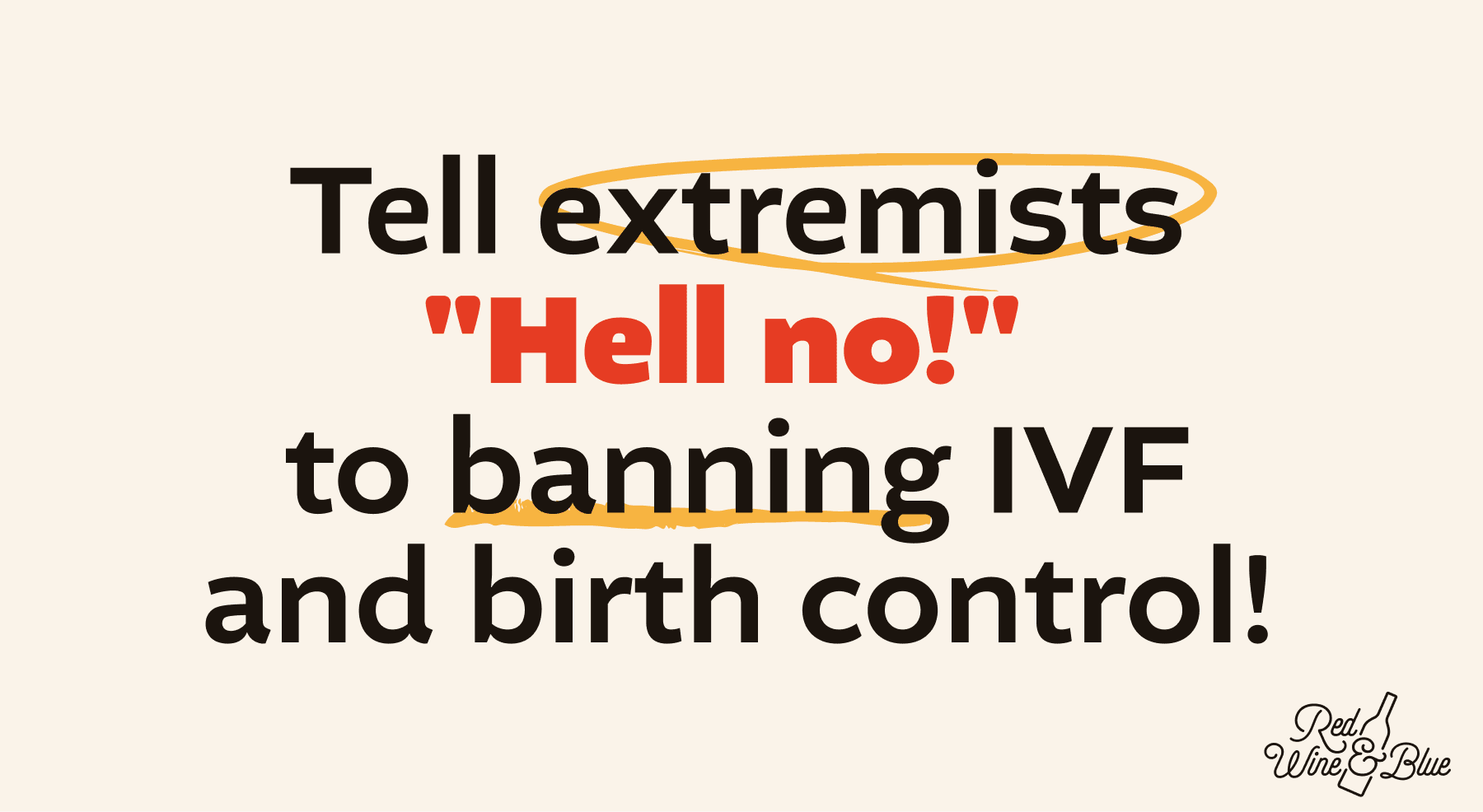
Through this campaign, we’ll keep you informed about what’s going on with these issues, and give you simple actions to take throughout the year. The first one is easy – just sign up!
Watch This: They are coming for IVF and Birth Control
Last week we learned about how extremists are now targeting more of our reproductive rights. This isn’t just happening in red states — this trend is affecting every single one of us, no matter where we live. And even though some may try to deny it, Republican representatives at the state and federal level are talking more openly about taking away our rights to IVF and birth control. We have the receipts — their statements AND their voting records.
It might sound hyperbolic — we know it’s hard to imagine this could happen in the United States — but we’ve seen it happen before. Just watch this video and listen to the way Supreme Court Justices promised Roe v. Wade was settled law, then overturned it. Now extremist legislators see a path to continue to strip away all our reproductive choices.
Extremists are coming for our rights. Stay tuned to learn how you can help us come for their jobs.
Read This: They Are Coming For Our Contraception
Before the fall of Roe v. Wade in 2022, many of us thought our right to abortion was something that could never be taken away — but now we know better. 43 states now have abortion restrictions, 14 of them with total bans.1
We know that extremists have been targeting women’s reproductive healthcare for decades.2 And they don’t plan to stop with abortion bans. Everything related to reproduction — including abortion access, miscarriage treatment, fertility treatments like IVF, and birth control — is at risk.
At the root of this is the extreme-right’s long time goal of having “fetal personhood” legally recognized — a concept that says that life starts at fertilization. In January 2023, Republicans in the U.S. House introduced the Life at Conception Act, with 125 Republican sponsors, that says that human life begins at fertilization.3 And on February 16, 2024, a “fetal personhood” ruling was made in Alabama that has the potential to impact all of us.4
With its Chief Justice quoting the Bible in his concurring opinion, the Alabama Supreme Court ruled that frozen embryos are legally considered children. That means that all embryos, from the moment of fertilization, have legal rights, even before they are implanted in a woman’s uterus. IVF providers in Alabama have paused treatments while they figure out the legal impacts of the ruling.5
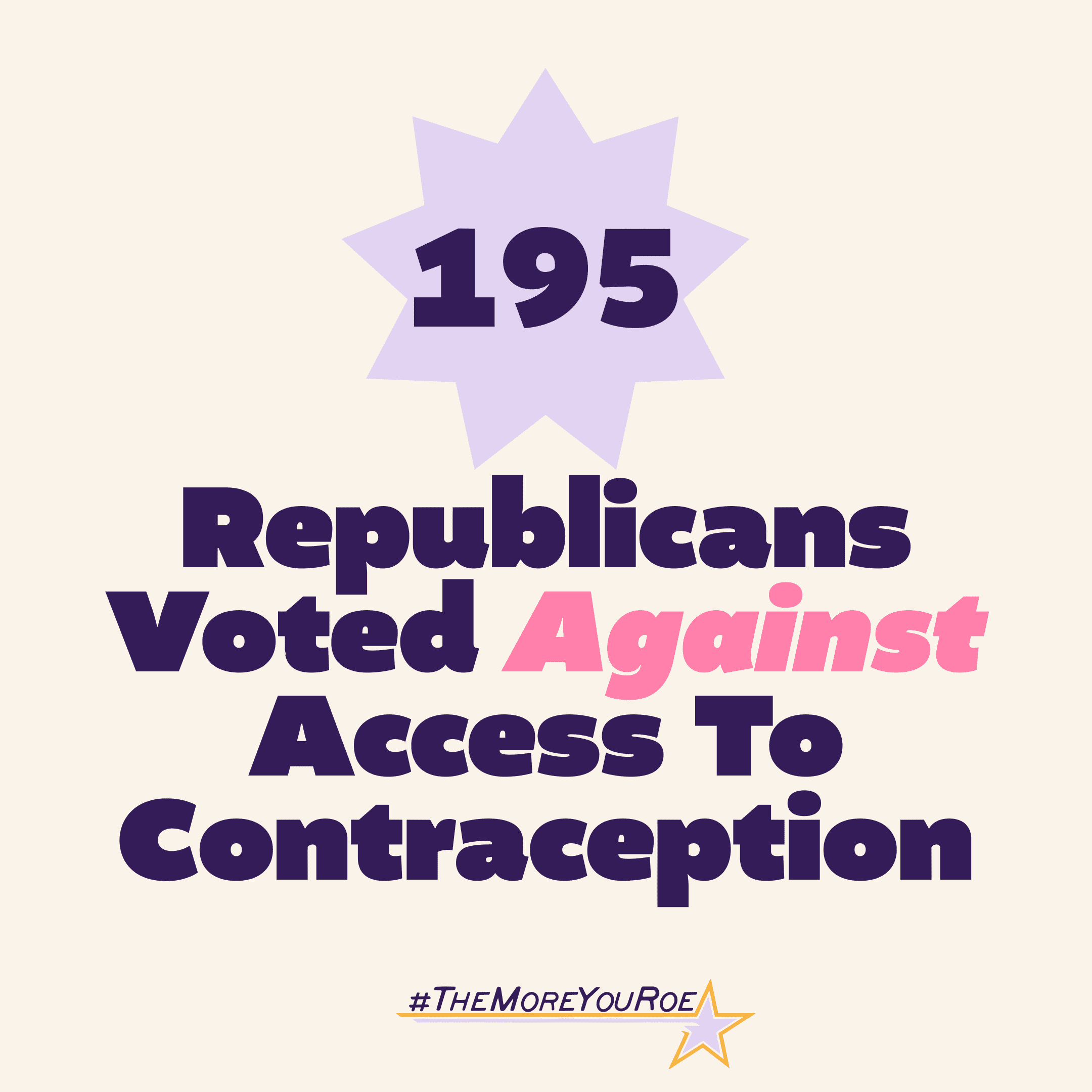 So, we’ve seen how extremists’ plans are restricting our access to abortion and IVF. What comes next? Well, shortly after the fall of Roe, 195 Republicans in the U.S. House voted against protecting the individual right to access contraception.6 Since then, several states have moved to criminalize other aspects of reproductive rights, including any birth control that stops a fertilized egg from implanting, such as intrauterine devices (IUDs). Our access to birth control, including emergency contraception like Plan B, will be at risk as long as extremists keep pursuing this idea of fetal personhood.
So, we’ve seen how extremists’ plans are restricting our access to abortion and IVF. What comes next? Well, shortly after the fall of Roe, 195 Republicans in the U.S. House voted against protecting the individual right to access contraception.6 Since then, several states have moved to criminalize other aspects of reproductive rights, including any birth control that stops a fertilized egg from implanting, such as intrauterine devices (IUDs). Our access to birth control, including emergency contraception like Plan B, will be at risk as long as extremists keep pursuing this idea of fetal personhood.
A lot of this doesn’t make logical sense. How is it pro-life to stop IVF procedures for the 1 in 6 women who want children but are experiencing fertility issues? And if they want to decrease the number of abortions in our country, why are they limiting access to birth control? But for them, it’s not about logic. It’s about controlling women and making our reproductive choices for us. Our access to birth control will not be safe until it is explicitly protected by law. Stay tuned for more information in the coming weeks about how we can secure that protection.

